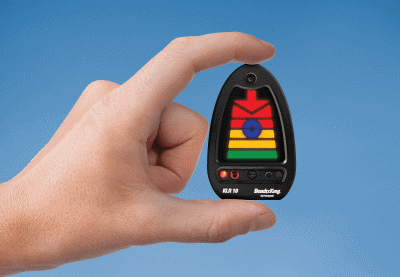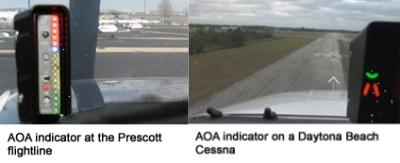Thu, Feb 06, 2014
Measure Could Improve Safety In Thousands Of Airplanes
The FAA on Wednesday today took an important step to help improve safety in small aircraft by simplifying design approval requirements for a cockpit instrument called an angle of attack (AOA) indicator. AOA devices, common on military and large civil aircraft, can be added to small planes to supplement airspeed indicators and stall warning systems, alerting pilots of a low airspeed condition before a dangerous aerodynamic stall occurs, especially during takeoff and landing.

“Safety is our top priority, and with today’s announcement we are improving safety by streamlining regulations and cutting red tape – a win-win situation,” said U.S. Department of Transportation Secretary Anthony Foxx.
An “angle of attack” is the angle between a plane’s wing and the oncoming air. If the angle of attack becomes too great, the wing can stall and lose lift. If a pilot fails to recognize and correct the situation, a stall could lead to loss of control of the aircraft and an abrupt loss of altitude. Stalls can happen during any phase of flight, but they are critical when planes are near the ground and have less room to recover, such as during landing and takeoff.
AOA indicators may help prevent loss of control in small aircraft because they provide a more reliable indication of airflow over the wing. Although they have been available for some time, the effort and cost associated with gaining installation approval has limited their use in general aviation. The streamlined requirements are expected to lead to greater use of the devices and increased safety in general aviation.
“We have eliminated major barriers so pilots can add another valuable cockpit aid for safety,” said FAA Administrator Michael Huerta. “These indicators provide precise information to the pilot, and could help many avoid needless accidents.”

Under the new policy, manufacturers must build the AOA indicator system according to standards from the American Society for Testing and Materials (ATSM) and apply for FAA approval for the design via a letter certifying that the equipment meets ATSM standards and was produced under required quality systems. The FAA’s Chicago Aircraft Certification Office will process all applications to ensure consistent interpretation of the policy.
The FAA believes this streamlined policy may serve as a prototype for production approval and installation of other add-on aircraft systems in the future.
More News
Airbus Racer Demonstrator Makes Inaugural Flight Airbus Helicopters' ambitious Racer demonstrator has achieved its inaugural flight as part of the Clean Sky 2 initiative, a corners>[...]
A little Bit Quieter, Said Testers, But in the End it's Still a DA40 Diamond Aircraft recently completed a little pilot project with Lufthansa Aviation Training, putting a pair of >[...]
Line Up And Wait (LUAW) Used by ATC to inform a pilot to taxi onto the departure runway to line up and wait. It is not authorization for takeoff. It is used when takeoff clearance >[...]
Contributing To The Accident Was The Pilot’s Use Of Methamphetamine... Analysis: The pilot departed on a local flight to perform low-altitude maneuvers in a nearby desert val>[...]
From 2015 (YouTube Version): Overcoming Obstacles To Achieve Their Dreams… At EAA AirVenture 2015, FedEx arrived with one of their Airbus freight-hauling aircraft and placed>[...]
 Airbus Racer Helicopter Demonstrator First Flight Part of Clean Sky 2 Initiative
Airbus Racer Helicopter Demonstrator First Flight Part of Clean Sky 2 Initiative Diamond's Electric DA40 Finds Fans at Dübendorf
Diamond's Electric DA40 Finds Fans at Dübendorf ANN's Daily Aero-Term (04.23.24): Line Up And Wait (LUAW)
ANN's Daily Aero-Term (04.23.24): Line Up And Wait (LUAW) NTSB Final Report: Extra Flugzeugbau GMBH EA300/L
NTSB Final Report: Extra Flugzeugbau GMBH EA300/L Classic Aero-TV: 'Never Give Up' - Advice From Two of FedEx's Female Captains
Classic Aero-TV: 'Never Give Up' - Advice From Two of FedEx's Female Captains




